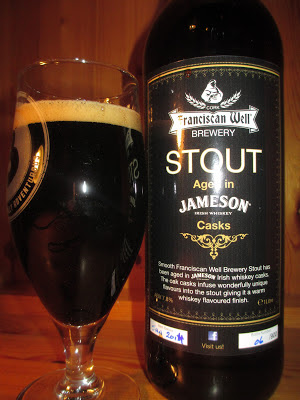Who would have thought that thus far, one of the best pints I've ever had would be a humble London Pride?
Granted, this is much different to anything I've had from the bottle or can. Those servings are all well and good, being reliable and tasty, and while I loved some Pride only a few months ago, it's not something I go out of my way to get anymore. That is, until it appeared in it's cask form at the Bierhaus.
Eager to finally have a true cask experience (I do not include the fumbled ball that was the Helvick Gold in B&C), I made my way to the 'haus at opening time to get stuck in - I even watched as the cask was prepared, and gladly accepted the very first pint of the stuff.
Cask London Pride pours copper as you'd expect, and the aroma is gorgeous. Like so many English ales it's balanced to perfection, and while that often crosses the fine line to boring mediocrity, here everything seems so very lively. With the first sip, I think I understand what's going on. The hops are incredibly potent; that's not to say it's very bitter, not at all, but it really tastes like what I imagine fresh, whole cone hops to taste like. The effect is cooling on the tongue, which only enhances their fruity bitterness. The finish picks up on the caramel malt and throws in a fist of peanuts to seal the deal. The aftertaste is woody and longlasting.
While the flavours here are the same as what you'd get from the bottle, they're delivered so much more effectively. I don't know whether this is purely down to the cask, or the ultra-freshness of my pint, but I like it.
No, I love it.
















